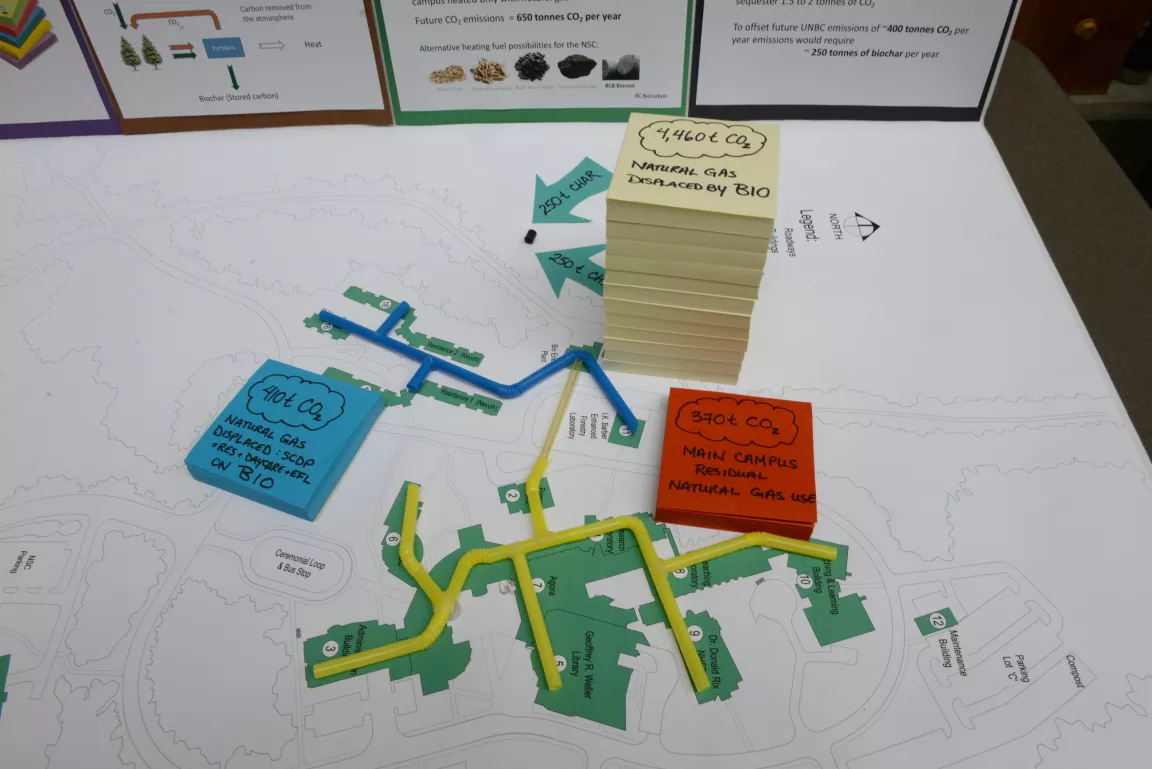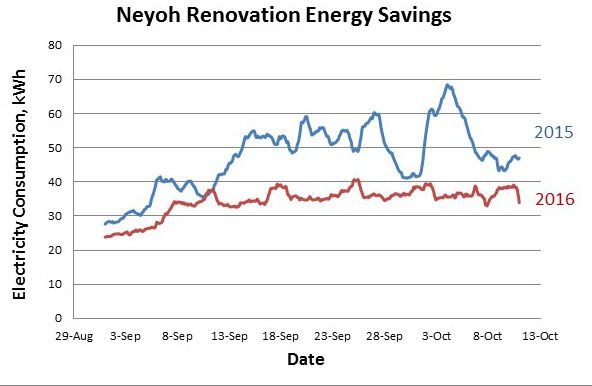First Residence Connected to New Bioenergy Heating System

An early snowfall has already blanketed the University of Northern British Columbia’s Prince George campus once this fall, but students living in the Neyoh residence are being kept toasty warm through a unique bioenergy-fueled project.
The newly renovated suites are connected to the Sustainable Communities Demonstration Project (SCDP), a new district energy system on campus. In less than two months since coming on line, and despite colder weather in 2016 as compared to 2015, the project has already resulted in a significant decrease in electricity and natural gas consumption.
So far this year the Neyoh residence is using 60 per cent of the electricity it would have used had the Sustainable Communities Demonstration Project not been implemented.
When the project is complete it’s projected to save 380,000 kWh of electricity per year, a savings of $23,000. In addition, by switching the hot water and heating systems at the residences from natural gas to bioenergy, there is a projected savings of 7,000 GJ of natural gas representing $25,000 in savings. The annual reductions in carbon emissions is projected to be 350 tonnes, the equivalent of removing 110 cars from the road.

This graph represents the electrical savings in the first few weeks of operation of the Sustainable Communities Demonstration Project.
Launched in 2014, the SCDP will eventually connect the heating systems of four campus buildings – including both residences – to UNBC’s existing pellet boiler. The boiler heats water in a closed loop and the hot water is then used to heat the buildings. The hot water heating system replaces the electrical and natural gas heating systems which had been used in Neyoh.
The pipes used to transport the hot water for heating were put into the ground in 2015 and the Neyoh residence was hooked up to the system in the summer of 2016. The Keyoh residence and the UNBC Childcare Centre are both slated to be connected in 2017. The IK Barber Enhanced Forestry Laboratory is also part of the project.
The project is designed to model a northern, rural, or off-grid community, effectively serving as a platform for education, research, and demonstration. Rather than heat the water to 120 C like the UNBC Bioenergy Plant does for most of the campus buildings, the pellet boiler only heats the water to 80 C. The lower temperature makes it suitable for possible future connection to alternative heating technologies such as geothermal, solar thermal, and heat recovery.
By building and operating a system like the SCPD, UNBC can model it for other northern, rural and off-grid communities who are considering implementing a bioenergy or alternative energy community heating system.
The total cost of the capital project is $2.2 million, with $1.1 million coming from the Province of British Columbia. The Omineca Beetle Action Coalition, TransCanada Corporation and the BC Bioenergy Network have also made funding commitments. Pacific BioEnergy is donating the wood pellets that will fuel the system.
The first phase of UNBC’s Energy Initiative came online in 2009 when the pellet heating system was connected to the IK Barber Enhanced Forestry Laboratory. The project affirmed UNBC’s ability to successfully own and operate an advanced renewable energy system, while simultaneously producing valuable research.
The multiple award-winning Bioenergy Plant was next to become operational, firing up for the first time in May 2011. It uses gasification to convert sawmill residue into heat via hot water pipes. The plant is the primary method of heating all of the buildings within the Prince George campus loop and has led to an 85 per cent reduction in natural gas use since it opened.
Pictured: A map of UNBC's Energy Initiative. The blue pipes represent the new Sustainable Communities Demonstration Project and the blue paper the volume of natural gas emissions that will be displaced when the project is completed. The yellow pipes represent the main district energy system on campus and the yellow paper represents the volume of natural gas emissions displaced. The red paper represents the volume of residual natural gas emissions still produced on campus.